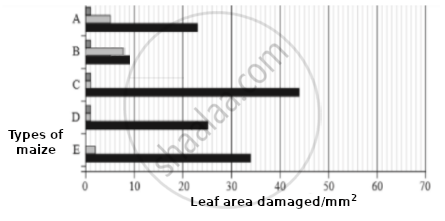Advertisements
Advertisements
Question
How has RNAi technique helped to prevent the infestation of roots in tobacco plants by a nematode Meloidegyne incognitia?
Solution
RNAi technique is helpful in preventing nematode infestation in tobacco plants. This can be done by introducing nematode-specific genes in host plants using the Agrobacterium vector in such a way that it produces both sense and antisense RNAs in the host cells. Presence of the dsRNA formed of sense and antisense strands starts the process of RNAi and silences the specific nematode mRNA. As a result, the nematode does not survive in the transgenic host plant.
APPEARS IN
RELATED QUESTIONS
Describe any three potential applications of genetically modified plants.
What happens when Meloidegyne incognitia consumes cells with RNAi gene?
Which part of the plant is best suited for making virus-free plants and why?
List any five possible advantages of a GMO to a farmer.
How has the use of Agrobacterium as vectors helped in controlling Meloidogyne incognita infestation in tobacco plants? Explain in the correct sequence.
A person deficient in the rhodopsin should be advised to take more of:
Bt brinjal is an example of transgenic crops. In this Btrefers to ______.
Bt cotton is not ______.
Gene expression can be controlled with the help of RNA. Explain the method with an example.
Insects in the Lepidopteran group lay eggs on maize crops. The larvae on hatching feed on maize leaf and tender cob. In order to arrest the spread of three such Lepidopteran pests, Bt maize crops were introduced in an experimental field.
A study was carried out to see which of the three species of lepidopteran pests was most susceptible to Bt genes and its product.
The lepidopteran pests were allowed to feed on the same Bt-maize crops grown on 5 fields (A-E).
The graph below shows the leaf area damaged by these three pests after feeding on maize leaves for five days.

Key for lepidopteran insect pest species
 |
Species I |
 |
Species II |
 |
Species III |
Insect gut pH was recorded as 10, 8 and 6 respectively for Species I, II and III respectively.
(a) Evaluate the efficacy of the Bt crop on the feeding habits of the three species of stem borer and suggest which species is least susceptible to Bt toxin.
(b) Which species is most susceptible to Bt-maize, and explain why?
(c) Using the given information, suggest why a similar effect was not seen in the three insect species.
